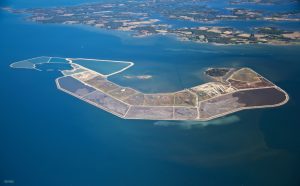
In the middle of Maryland’s Chesapeake Bay, in between the South River and the Eastern Shore, lies one of the most ambitious environmental restoration projects in the United States – Poplar Island. This remarkable landmass tells a story of loss, rebirth, and innovative environmental engineering that has captured the attention of scientists and conservationists worldwide.
History
In the 1800s, Poplar Island was a thriving community spanning over 1,100 acres. The island supported several farms and a small fishing community of about 100 residents. However, like many Chesapeake Bay islands, Poplar Island fell victim to storms, erosion and sea-level rise. By the 1990s, the once-bustling island had nearly vanished, reduced to a mere 4 acres of scattered fragments barely visible above the waterline. In some places, only a few bleached tree trunks marked the location of sunken land.
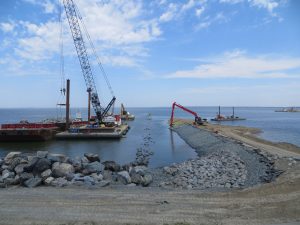
But in 1998, an innovative partnership between federal and state agencies launched the Paul S. Sarbanes Ecosystem Restoration Project at Poplar Island. The project’s ambitious goal was to rebuild the island using dredged material from the Port of Baltimore’s shipping channels – essentially turning a maintenance necessity into an environmental opportunity. Barge after barge after barge transported the dredgings to the breakwaters of the new and ever-expanding island.
Today’s island spans approximately 1,715 acres, carefully engineered to match the island’s footprint from the 1847 surveys. The restoration consists of both wetlands and uplands, creating a diverse ecosystem that mirrors natural bay islands.
Engineering Meets Nature

The project’s design is ingenious in its simplicity and effectiveness. Engineers constructed stone dikes to create containment cells, which are then filled with dredged material from the bay’s shipping channels. Once filled, these cells are carefully graded and planted with native vegetation. The eastern side of the island features tidal wetlands, while the western portion maintains higher elevation uplands.
Perhaps the most compelling evidence of the project’s success is the return of wildlife. The island now serves as a crucial nesting ground for many bird species, including:
- Common terns
- Least terns
- Snowy egrets
- Black-crowned night herons
- Osprey
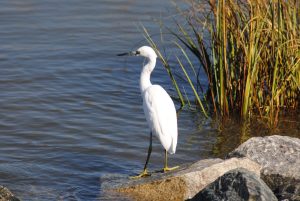
We’ve seen bald eagles, marsh harriers, black duck, cormorants and goldeneyes in winterThe island has become particularly important for diamondback terrapins, with thousands of hatchlings emerging from its protected beaches each year. Monitoring has documented over 200 species of birds using the island during various seasons.
Ongoing Development
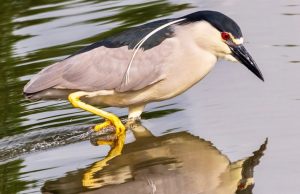 The restoration project continues to evolve. Current plans aim to expand the island’s total size to approximately 1,715 acres by 2030 – nearly matching its historic footprint. The project serves as a model for beneficial use of dredged material, demonstrating how infrastructure needs can align with environmental restoration. Poplar Island has become more than just a restored habitat – it’s a living laboratory for scientists studying ecosystem restoration, climate resilience, and wildlife biology. Researchers regularly monitor water quality, vegetation success, wildlife populations, and the overall health of the restored ecosystem. Their findings help inform future restoration projects around the world.
The restoration project continues to evolve. Current plans aim to expand the island’s total size to approximately 1,715 acres by 2030 – nearly matching its historic footprint. The project serves as a model for beneficial use of dredged material, demonstrating how infrastructure needs can align with environmental restoration. Poplar Island has become more than just a restored habitat – it’s a living laboratory for scientists studying ecosystem restoration, climate resilience, and wildlife biology. Researchers regularly monitor water quality, vegetation success, wildlife populations, and the overall health of the restored ecosystem. Their findings help inform future restoration projects around the world.
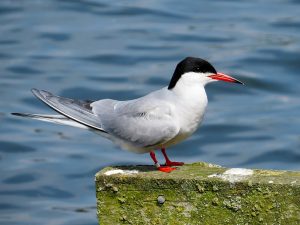
The success of Poplar Island demonstrates how human innovation can reverse environmental degradation. As coastal communities worldwide face challenges from rising seas and erosion, Poplar Island stands as a beacon of hope and a model for future restoration projects. It shows that with careful planning, adequate resources, and commitment to environmental stewardship, we can rebuild and restore vital ecosystems for future generations.
The story of Poplar Island isn’t just about restoring a lost piece of land – it’s about reimagining how we can work with nature to create sustainable solutions for both human needs and environmental conservation. As this living laboratory continues to evolve, it will undoubtedly provide more lessons and inspiration for similar projects around the globe.
